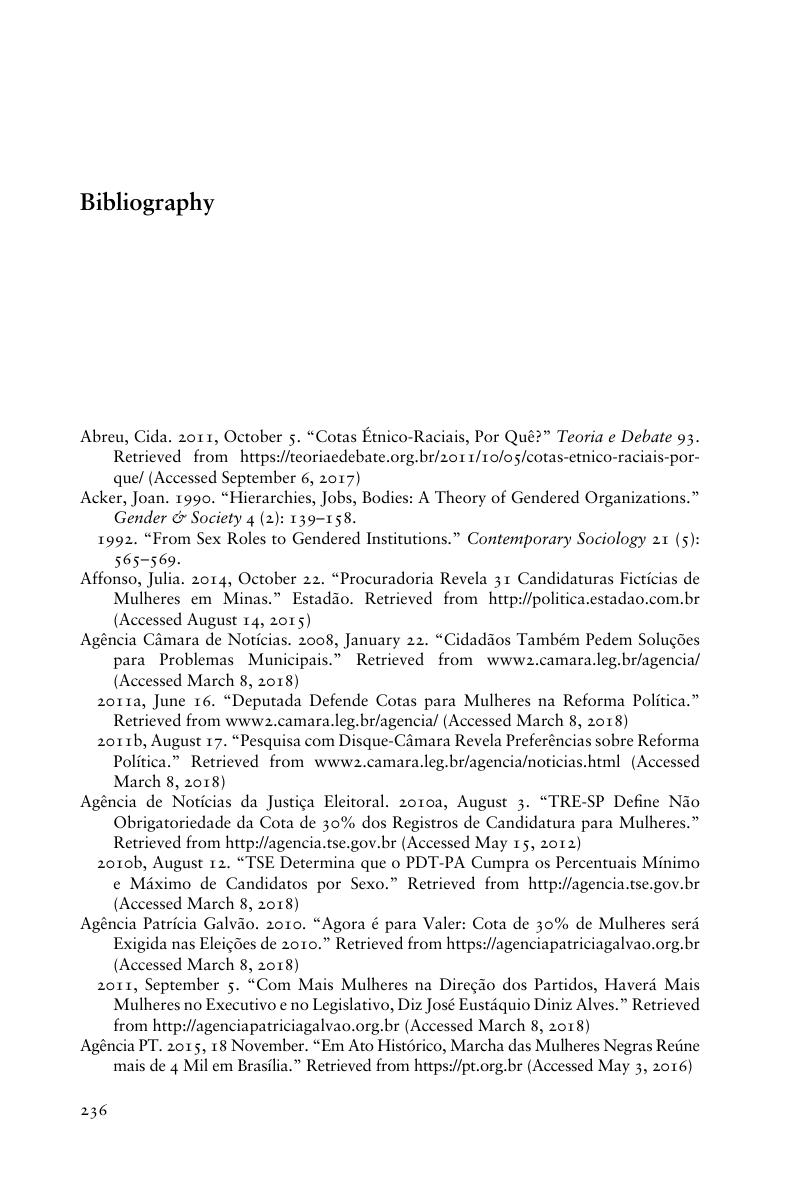Book contents
- Party Institutionalization and Women’s Representation in Democratic Brazil
- Cambridge Studies in Gender and Politics
- Party Institutionalization and Women’s Representation in Democratic Brazil
- Copyright page
- Dedication
- Contents
- Figures
- Tables
- Acknowledgments
- 1 The Puzzle of Women’s Underrepresentation in Brazil
- 2 Willing and Able: Party Institutionalization, Party Leadership, and Women’s Representation
- 3 Brazil’s Quota Law and the Challenges of Institutional Change Amidst Weak and Gendered Institutions*
- 4 Overcoming Gendered Obstacles: Voters, Electoral Rules, and Parties
- 5 Electoral Rules, Party Support, and Women’s Unexpected Successes in Elections to the Brazilian Senate
- 6 Supermadres, Lutadoras, and Technocrats: The Bounded Profiles of Brazil’s Female Politicians
- 7 Intersections between Race and Gender in Brazil’s 2014 Chamber of Deputies Elections
- 8 Theoretical Implications and Comparative Perspectives
- Appendices
- List of Interviews
- Bibliography
- Index
- References
Bibliography
Published online by Cambridge University Press: 23 July 2018
- Party Institutionalization and Women’s Representation in Democratic Brazil
- Cambridge Studies in Gender and Politics
- Party Institutionalization and Women’s Representation in Democratic Brazil
- Copyright page
- Dedication
- Contents
- Figures
- Tables
- Acknowledgments
- 1 The Puzzle of Women’s Underrepresentation in Brazil
- 2 Willing and Able: Party Institutionalization, Party Leadership, and Women’s Representation
- 3 Brazil’s Quota Law and the Challenges of Institutional Change Amidst Weak and Gendered Institutions*
- 4 Overcoming Gendered Obstacles: Voters, Electoral Rules, and Parties
- 5 Electoral Rules, Party Support, and Women’s Unexpected Successes in Elections to the Brazilian Senate
- 6 Supermadres, Lutadoras, and Technocrats: The Bounded Profiles of Brazil’s Female Politicians
- 7 Intersections between Race and Gender in Brazil’s 2014 Chamber of Deputies Elections
- 8 Theoretical Implications and Comparative Perspectives
- Appendices
- List of Interviews
- Bibliography
- Index
- References
Summary

- Type
- Chapter
- Information
- Publisher: Cambridge University PressPrint publication year: 2018



